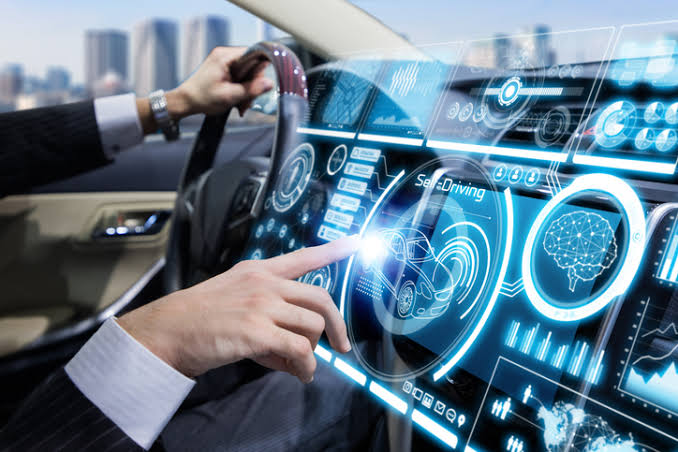How excited are you about moving to your new place? Of course, you must be extremely excited! Don’t let the thoughts of packing, loading or unloading lower your excitement. Whether you are relocating for work, family, or just a change of scenery, the process of packing up your life and starting fresh in a new location can be overwhelming.
However, technology has revolutionised the industry, making relocations more efficient and customer-centric. Advancements in vehicle technology are at the forefront of this transformation, significantly improving the efficiency and safety of moving services. These innovations are reshaping transportation from electric vehicles, reducing emissions to self-driving trucks, and optimising routes.
Let’s explore how these advancements are revolutionising the moving experience.
The Impact of Vehicle Technology Advancements on the Efficiency and Safety of Transportation Services
Over the past decade, several key trends have emerged in the automotive industry, each contributing to the enhancement of efficiency and safety in transportation services:
a. Electrification
Electric cars are leading the charge towards sustainable transportation solutions in the moving industry. The growing popularity of electric vehicles (EVs) and hybrid electric vehicles (HEVs) is driven by environmental concerns and advancements in battery technology. Manufacturers are investing heavily in EV production, aiming to phase out traditional combustion engines in favour of zero-emission alternatives.
Moving services can reduce carbon emissions, lower operating costs, and contribute to a cleaner environment by transitioning to electric fleets.For instance, you live in the traffic hub of Bangalore, Whitefeild. If you are looking for a vehicle with lower emissions and sound, the leading packers and movers Whitefield will obviously have what you need, such as electric vehicles (EVs).
b. Self-Driving Vehicles
Self-driving technology is revolutionising transport logistics, offering potential benefits in efficiency, safety, and cost-effectiveness for moving services. While fully autonomous vehicles are still in development, Level 3 and Level 4 automation features are making significant strides towards commercial deployment. Autonomous trucks equipped with advanced sensors and AI algorithms have the potential to optimise route planning, minimise fuel consumption, and enhance delivery precision. By leveraging self-driving technology, moving companies can streamline operations, increase productivity, and improve overall service quality.
c. Mobility-as-a-Service (MaaS)
Mobility-as-a-Service (MaaS) platforms are transforming the way people access transportation services, including moving solutions. These integrated platforms combine various modes of transportation, such as ride-sharing, public transit, and micro-mobility options, into seamless, on-demand experiences. With the rise of MaaS, moving services are becoming more flexible, convenient, and accessible to consumers. By embracing MaaS solutions, moving companies can optimise fleet utilisation, reduce congestion, and enhance the overall mobility experience for customers.
d. Advanced Safety Features
The integration of advanced safety features is paramount in ensuring the safety and security of moving services. Modern vehicles are equipped with a range of safety technologies, including collision avoidance systems, adaptive cruise control, and blind-spot monitoring. These features help prevent accidents, mitigate risks, and protect passengers and cargo during transit. Additionally, advancements in vehicle-to-vehicle (V2V) and vehicle-to-infrastructure (V2I) communication systems enhance situational awareness and enable proactive safety measures, further improving the safety standards of moving services.
e. Connectivity
Connectivity plays a vital role in enabling smart mobility solutions for moving services. With the advent of 5G technology and Internet of Things (IoT) connectivity, vehicles are increasingly interconnected, facilitating real-time data exchange and communication. Connected vehicles can access traffic updates, navigation assistance, and predictive maintenance alerts, enhancing operational efficiency and reducing downtime for moving fleets. Furthermore, connected vehicles enable remote monitoring and management, allowing moving companies to optimise fleet performance, track vehicle locations, and ensure compliance with safety regulations.
f.Alternative Fuels
In addition to electric vehicles, the adoption of alternative fuels is diversifying energy sources in the moving industry. E-fuels, such as e-kerosene and e-methanol, offer greener alternatives to traditional fossil fuels and can be produced using renewable energy sources. By embracing alternative fuels, moving services can reduce their carbon footprint, minimise environmental impact, and contribute to sustainable transportation practices.
g. Advanced Manufacturing Techniques
Advanced manufacturing techniques, such as 3D printing and additive manufacturing, are revolutionising vehicle design and production processes. These technologies enable the rapid prototyping of lightweight, high-performance vehicle components, reducing lead times and production costs. By leveraging advanced manufacturing techniques, moving companies can customise vehicle designs, optimise fuel efficiency, and improve overall vehicle performance, thereby enhancing the efficiency and sustainability of their operations.
Advancements in vehicle technology are revolutionising the efficiency and safety of moving services. From electric mobility to self-driving vehicles and advanced safety features, each innovation offers unique benefits.
You’ll find the best packers and movers in Bangalore integrating these technologies into their services. As we move forward, it’s evident that these groundbreaking technologies will continue to redefine the landscape of moving services, driving us toward a more efficient and sustainable future.






